I picked up a few different banknotes recently, so I have a few of these posts coming. Last week I looked at a ¥10 banknote; this time, we'll look at the smallest banknote ever issued by Japan, both in size and in value.
This guy:
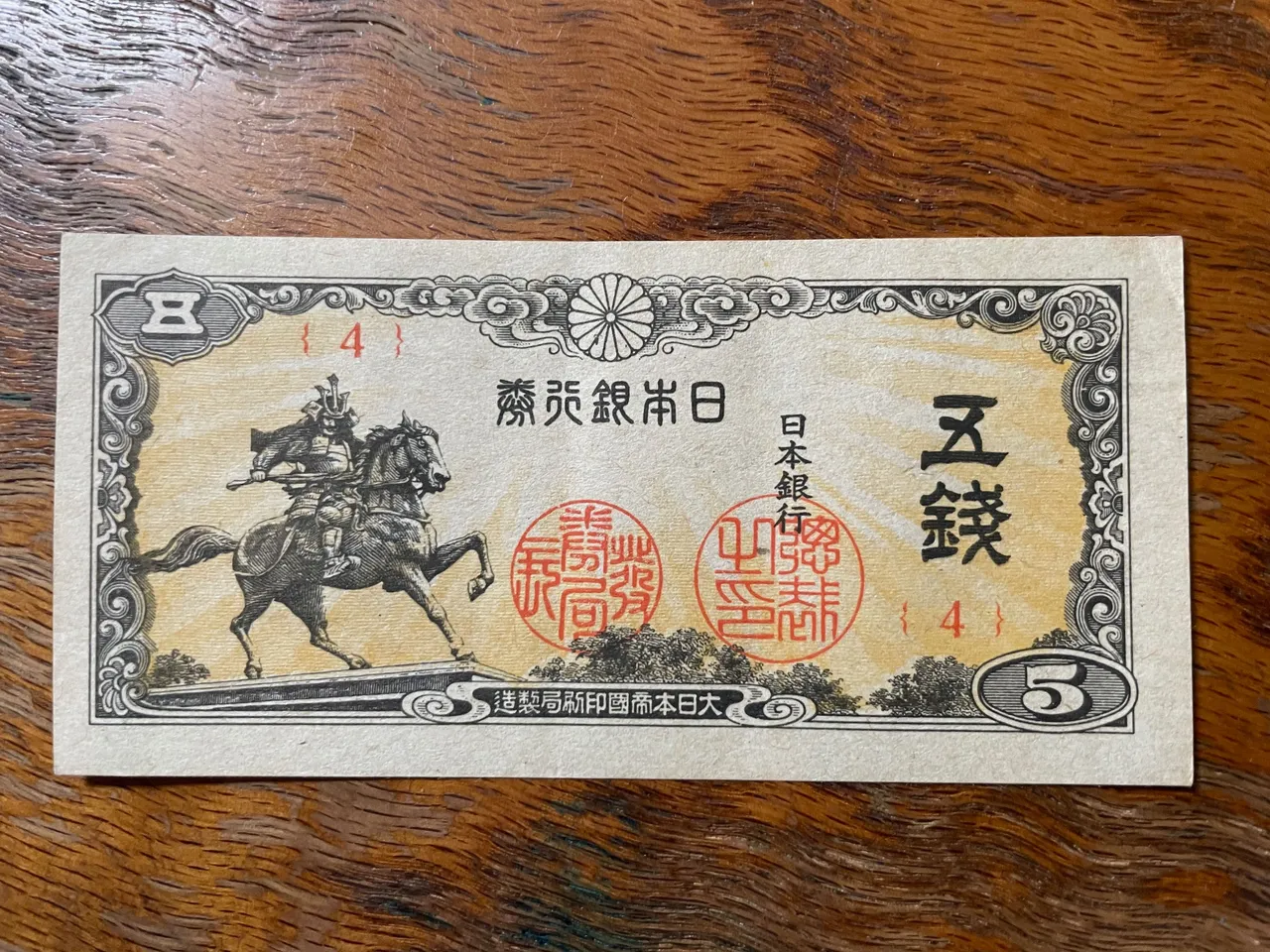
This is the 5 sen banknote. The sen as a unit isn't around anymore, but at the time it was equal to 1/100 of a yen. When it was created in 1871, 1 yen was roughly equal to one US dollar, making 1 sen equal to 1 US cent. It maintained that value until World War II, during and after which hyperinflation rendered it increasingly worthless. But more on that in a bit. Let's look at the details on this banknote first.
Front
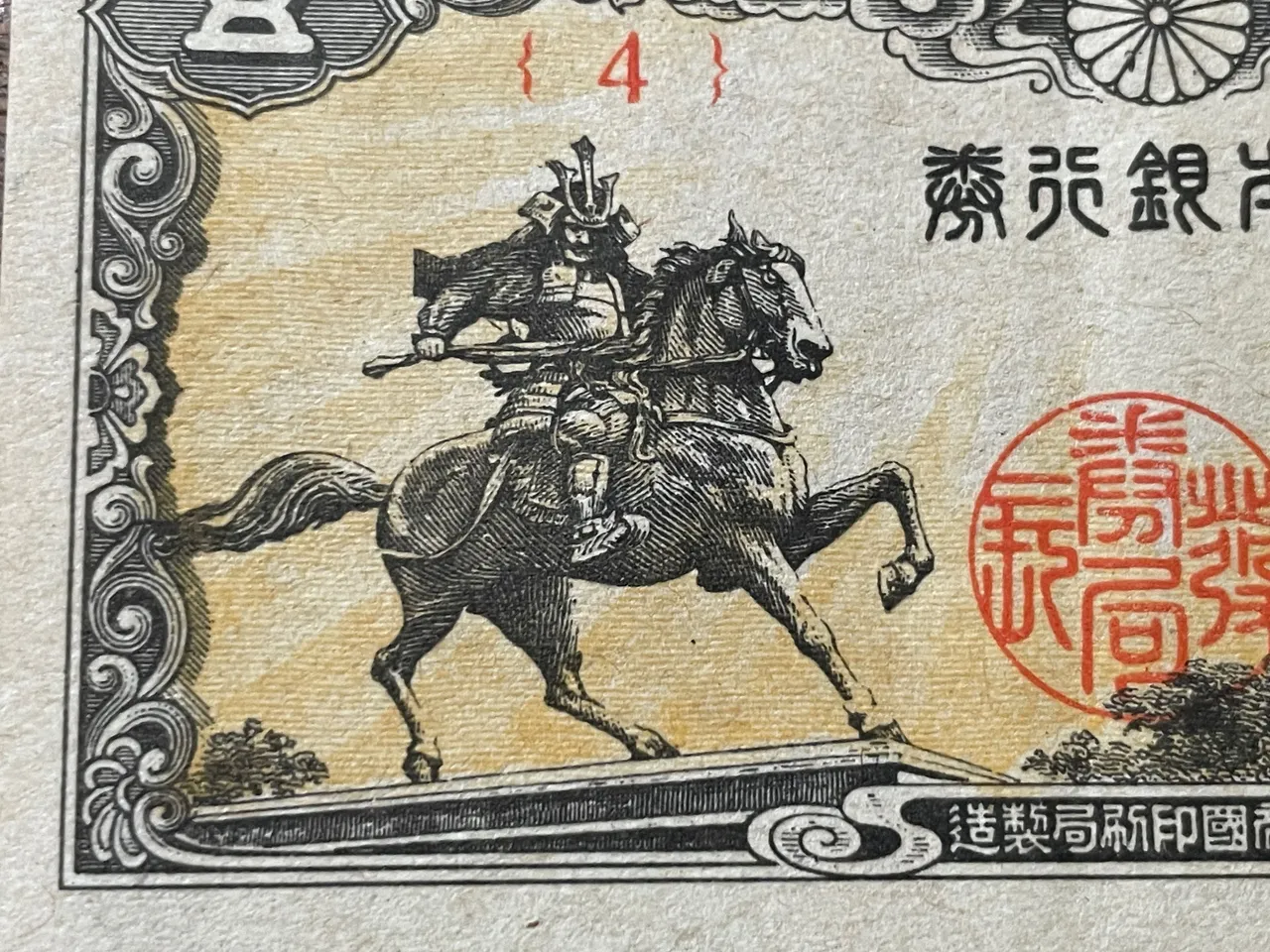

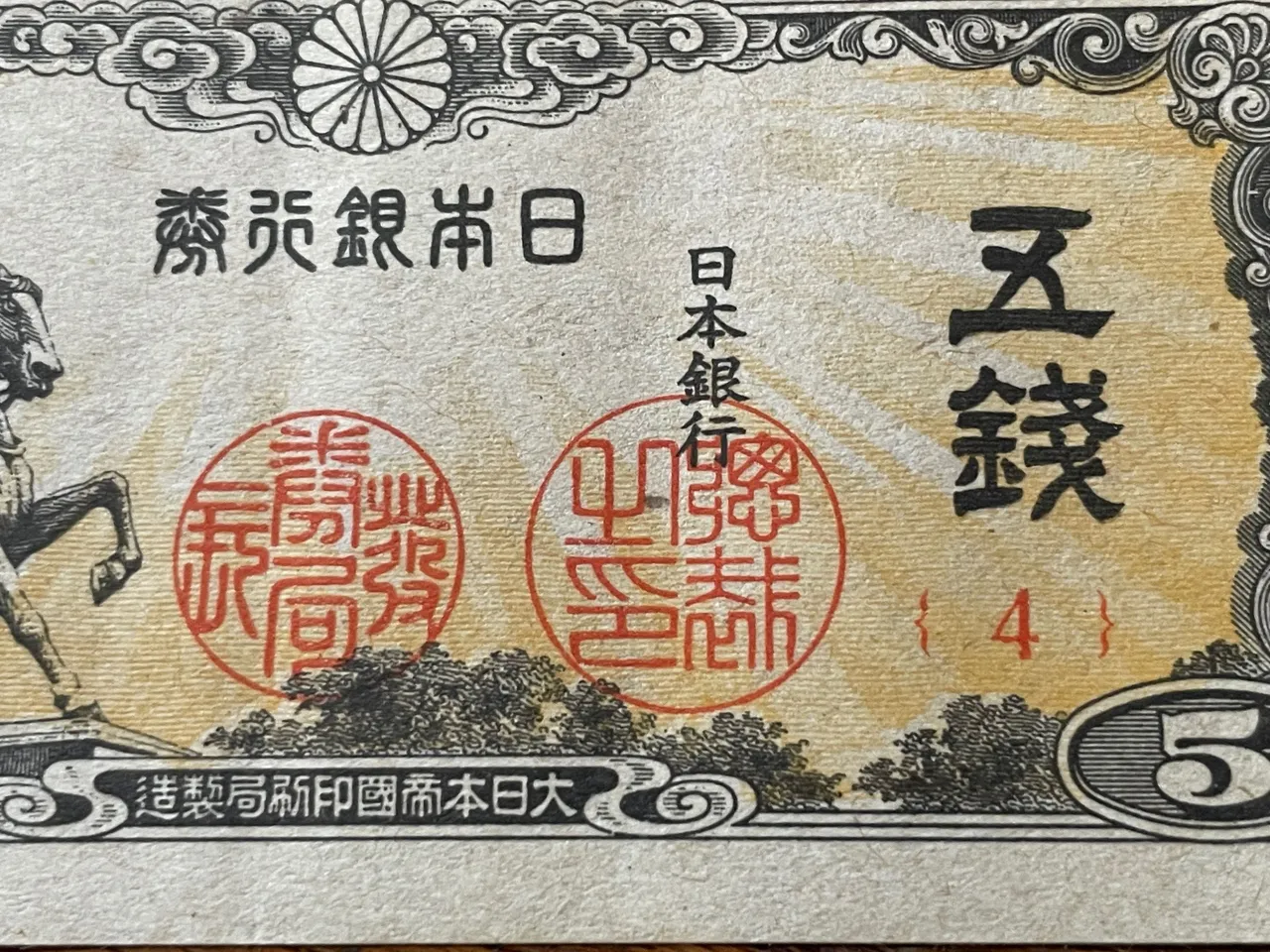
This features a nice picture of Kusunoki Masashige, in armor and on horseback. Because of his image, these notes were often referred to as "Masashige notes". He was a samurai in the Kamakura period, living from 1294 to 1336. He fought in the Genkō war, which was a civil war between Emperor Go-Daigo and the Kamakura Shogunate. His side won and the Emperor was able to regain power for a time, though it was only three short years before a new Shogunate was formed, led by Ashikata Takauji, who defeated Masashige in battle where he died. There is a story behind that, involving Go-Daigo refusing Masashige's advise and instead demanding he march into a battle that he knew he couldn't win, but so loyal was he that he did it anyway, even knowing it meant his death. Because of his action, he has always been held as an example of loyalty. That may have been why he was picked for this banknote: a message to the people who were increasingly angry at the Japanese government to be loyal.
The text says:
- 日本銀行券 (Nippon Ginkōken), "Bank of Japan note"
- 五銭 (Go sen), "five sen"
- 日本銀行 (Nippon Ginkō), "Bank of Japan".
- 大日本帝國印刷局幣造 (Dai Nippon Teikoku Insatsu Kyoku Heizō), "Printed by the Japanese Empire Printing Bureau"
Note: on the note, all the text is right-to-left, as that's how Japanese was written at the time.
Back
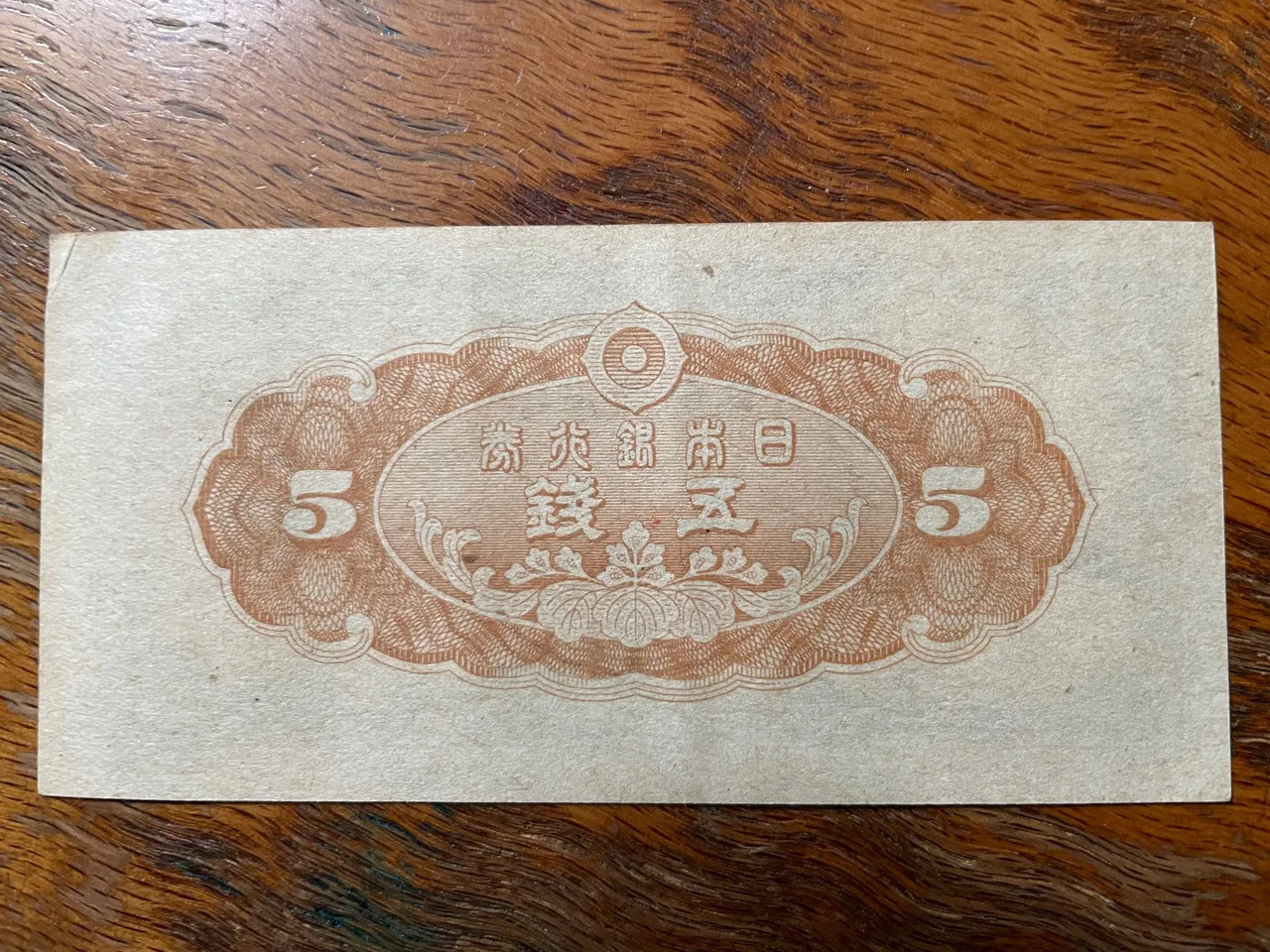
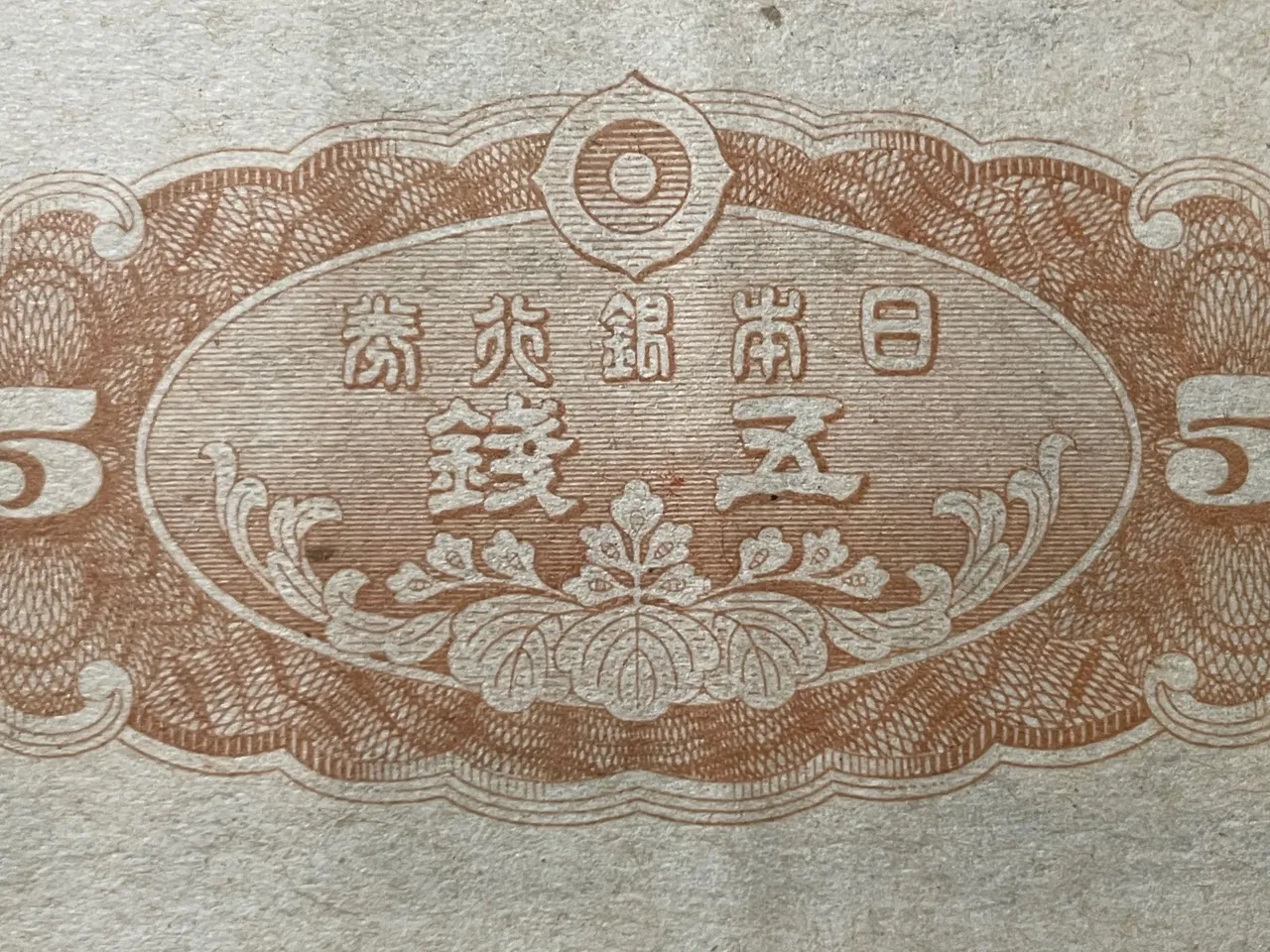
Pretty simple here: just some design, a few 5's, 日本銀行券, "Bank of Japan note", and 五銭, "5 sen".
About
This note was printed in 1944. Inflation had already made a value as low as 5 sen not worth very much. By this point, the yen had fallen to around ¥5 per dollar, making the value of 5 sen roughly equal to 1 US cent. Adjusted for inflation, that makes it worth about 18 US cents. So think of this note as equal to about two US dimes.
This isn't to mention that ¥5 to $1 was the official exchange rate at the time but almost nothing was available outside of the black market where prices were much higher, so in reality the value of 5 sen would have been even lower.
So why did the Japanese government bother printing notes for a value that had already become more or less worthless? Because they could no longer get any metal to mint the 5 sen coin.
I don't have any 5 sen coins. I need to try to find some. But here are some 10 sen coins to go along with the note.
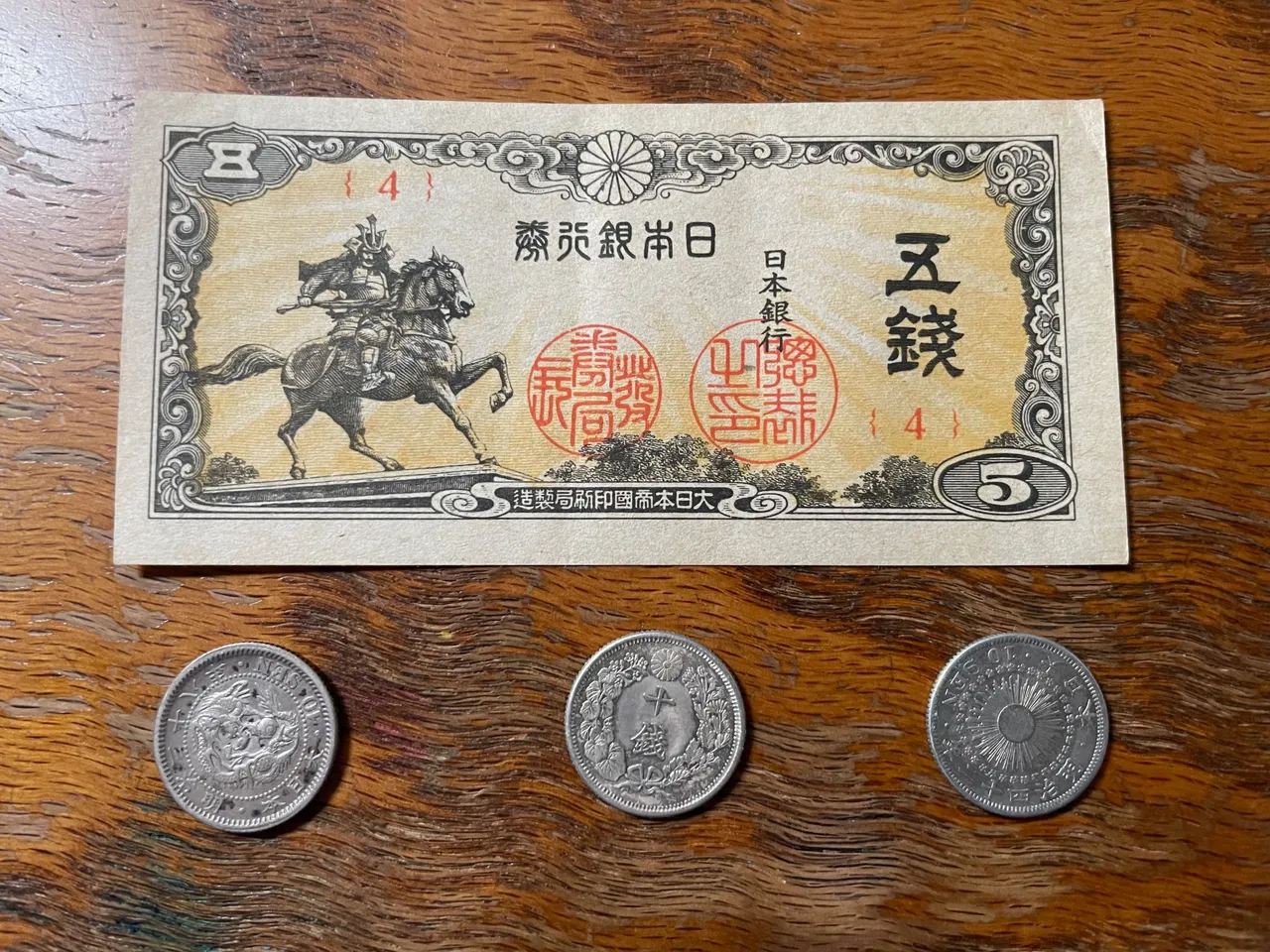
The 10 sen coins were 80% and 72% silver, so they are worth just a bit more today. The 5 sen coin was made of ... bronze I think. Then after the war started it was switched to alumin(i)um, then shortly after that, tin. Then... they couldn't get any more of any metal for it at all. They felt however that even if it was worthless, they needed some currency for that value, so they printed up these banknotes.
The banknote is only 94 x 48 mm in size. That's about the size of Monopoly money, possibly smaller. Here it is compared to that ¥10 note I showed last week.
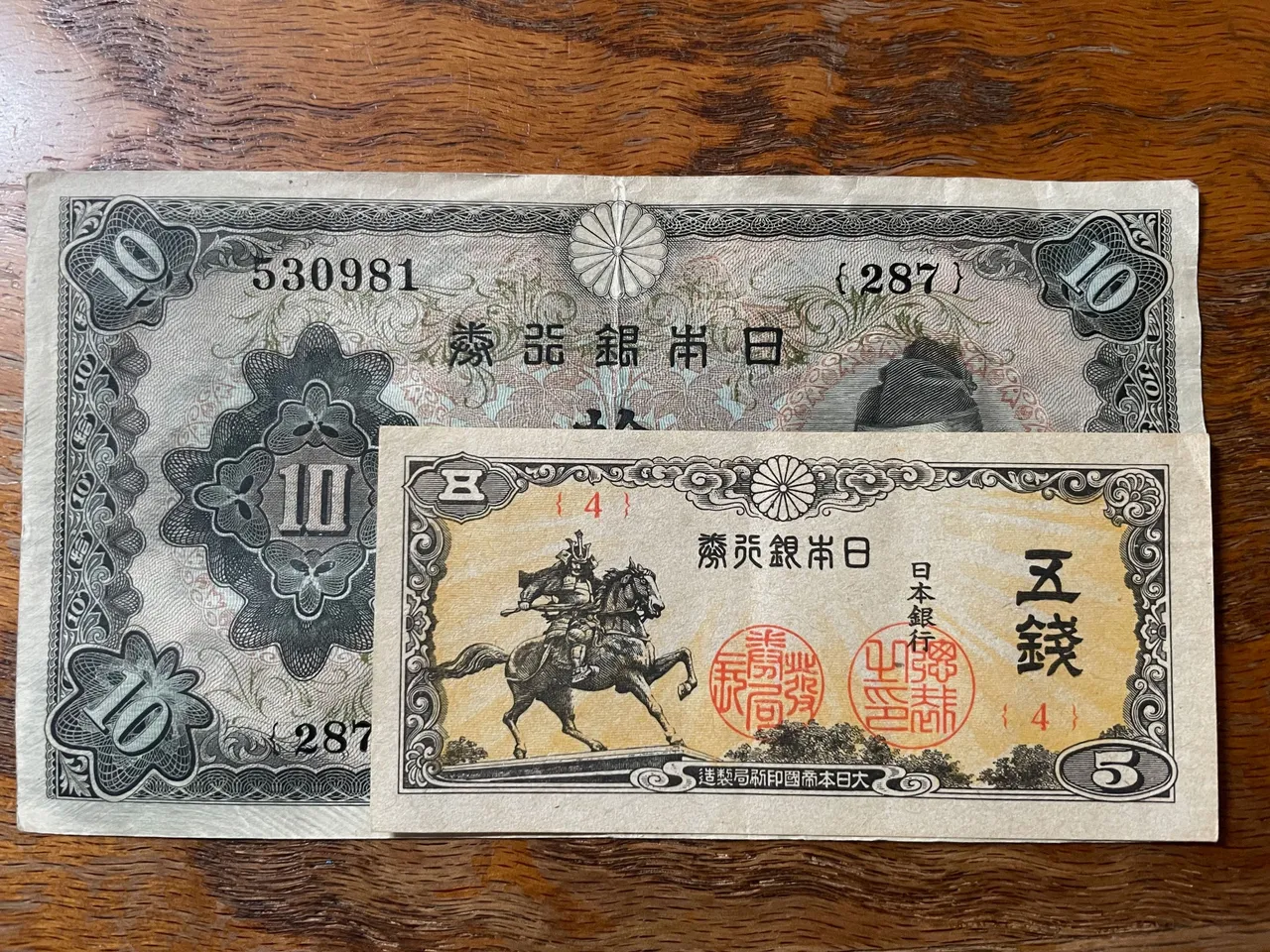
Even as worthless as it was, the note saw a lot of counterfeiting. I suppose that's kind of understandable, considering how desperate many people had become. I got this one from my coin shop so I don't think it's counterfeit, but I suppose I don't know for sure.
This note only lasted 4 years. In 1948 there was a new version printed with ume blossoms instead of the samurai. That one also didn't last long, because in 1953 the sen was officially discontinued and all sen coins and notes were withdrawn from circulation. By that point, the yen, which had once been equal to the dollar, had fallen to ¥360 per dollar, so I don't think many people were lamenting the demise of the sen.
Anyway, another cool bit of history to own!
❦
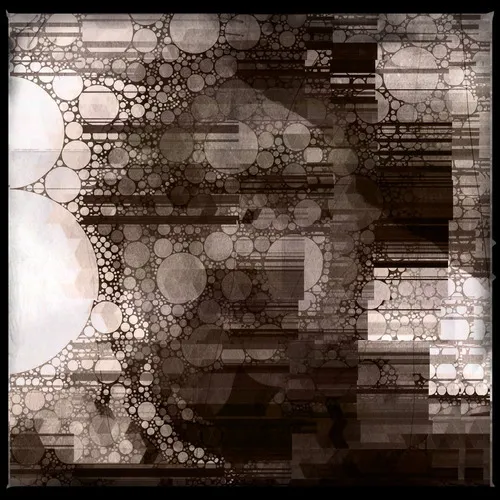 |
David LaSpina is an American photographer and translator lost in Japan, trying to capture the beauty of this country one photo at a time and searching for the perfect haiku. He blogs here and at laspina.org. Write him on Twitter or Mastodon. |
